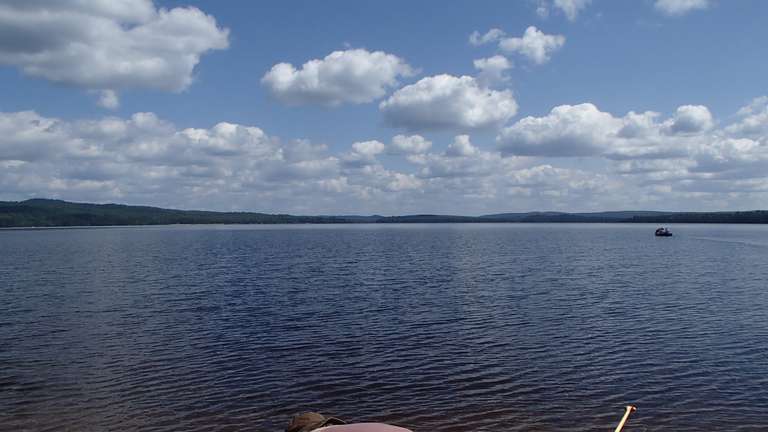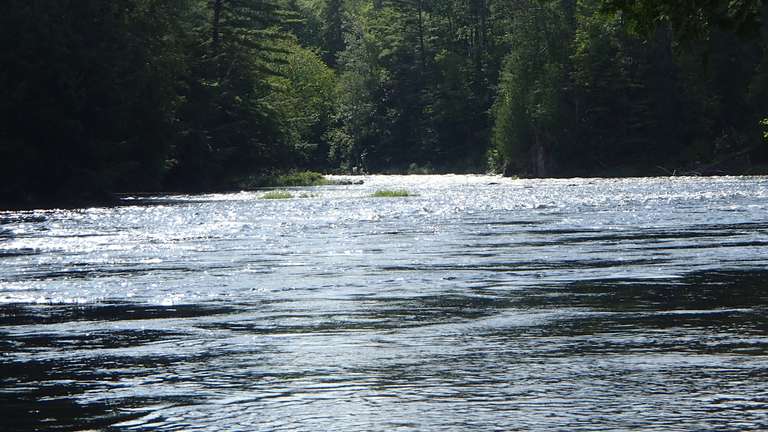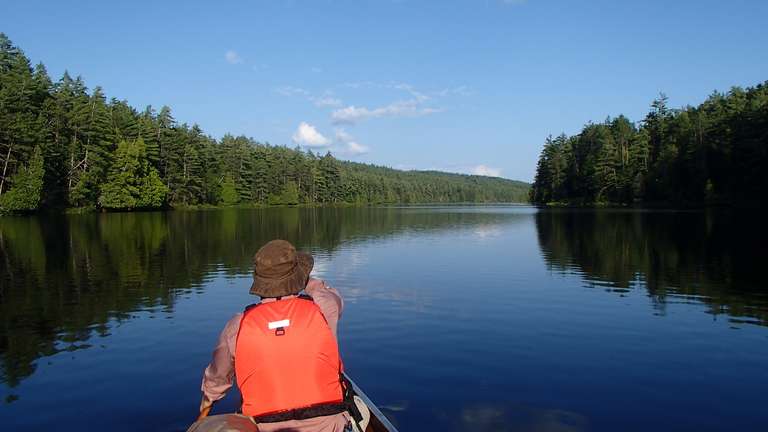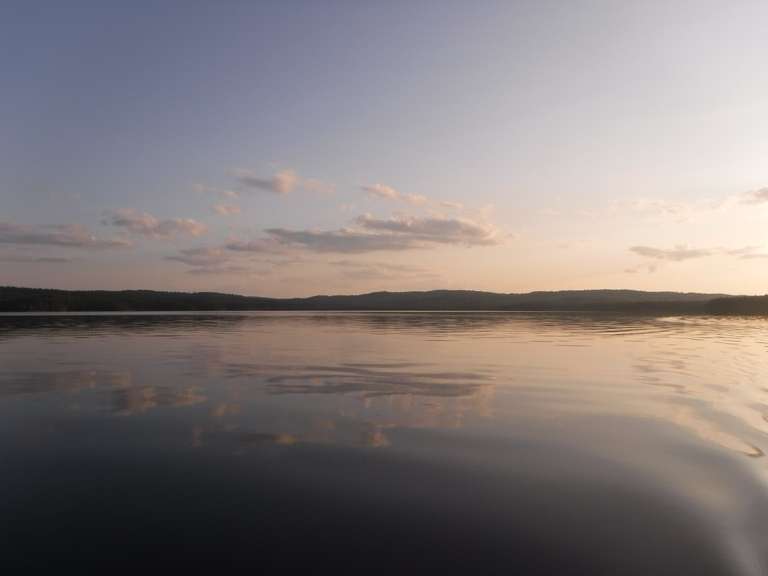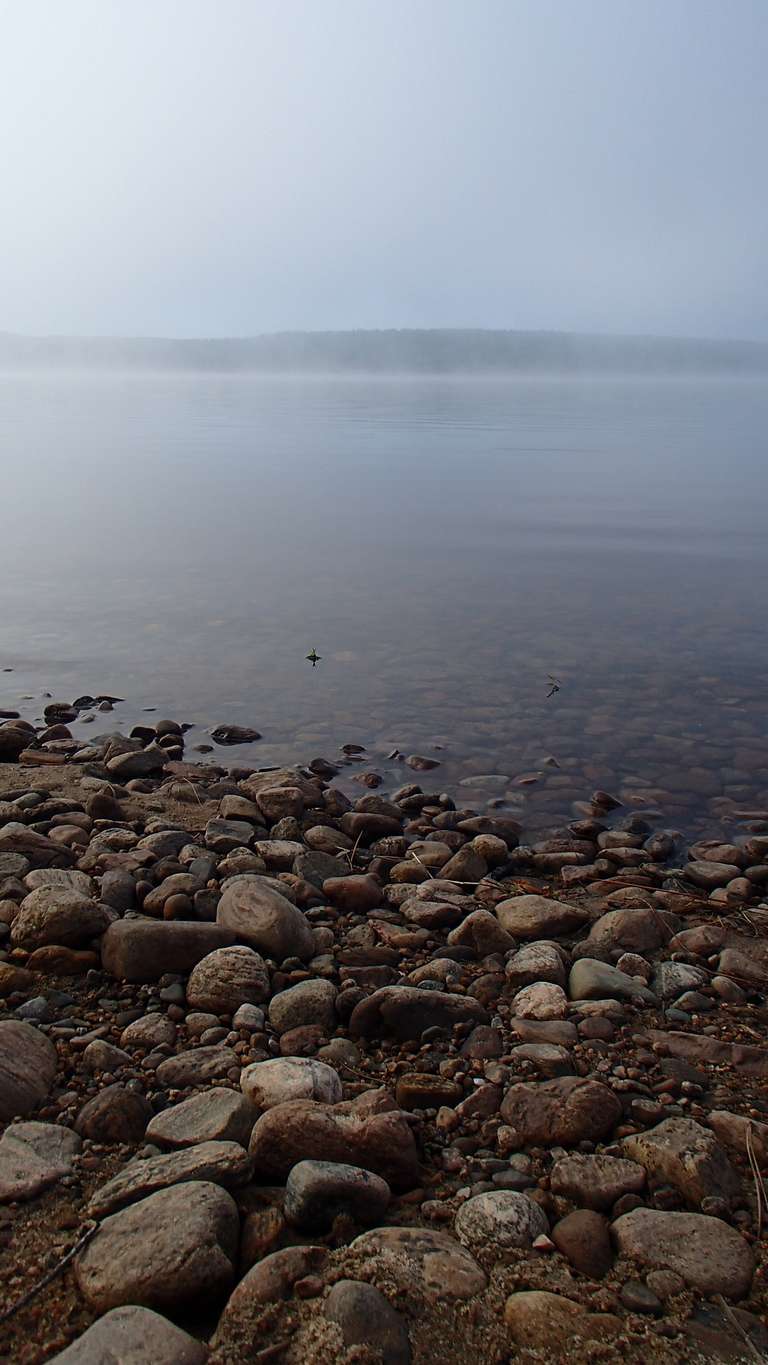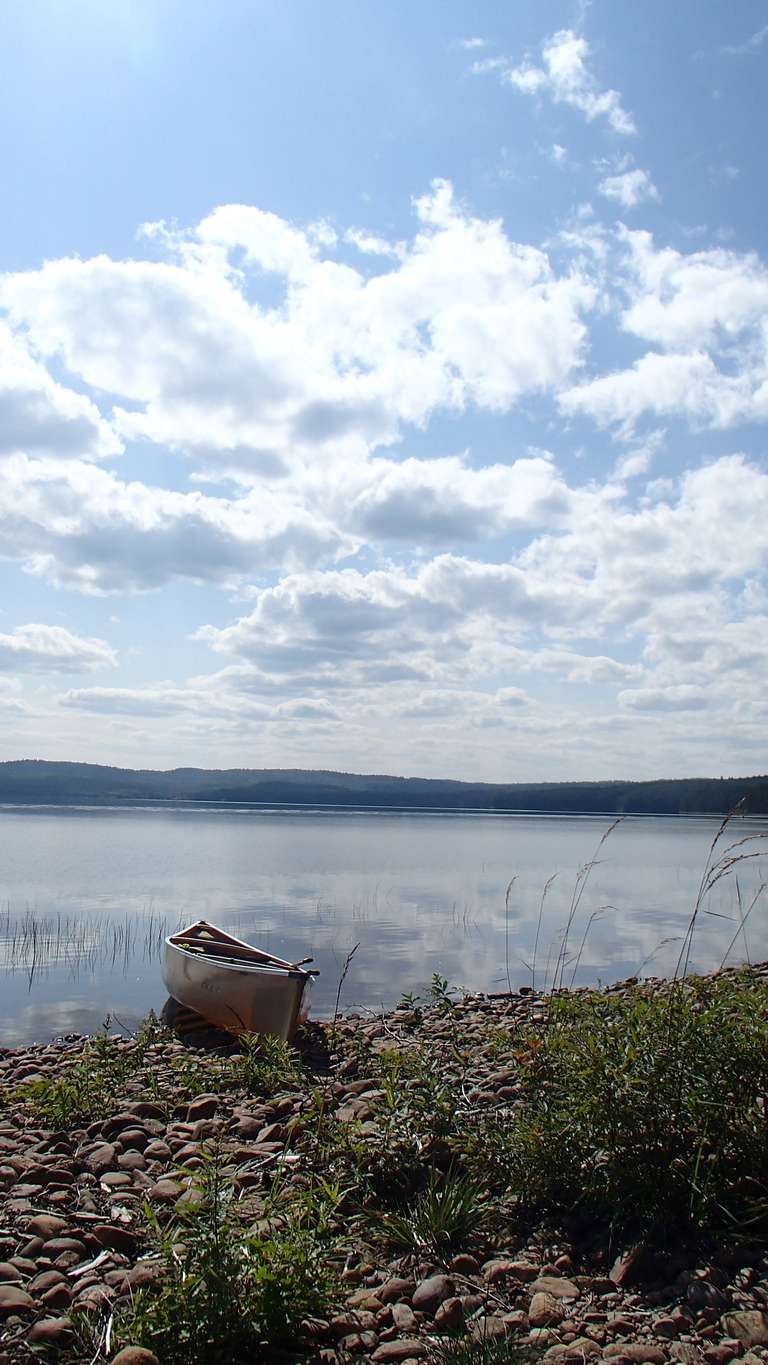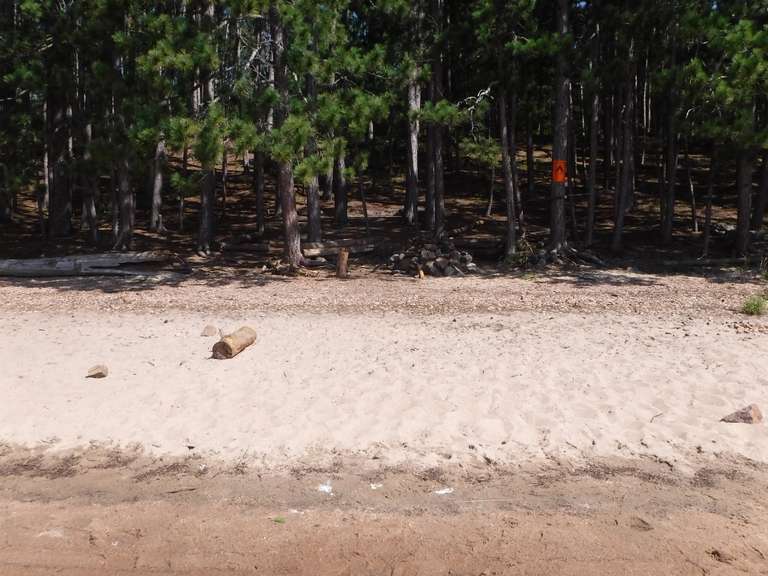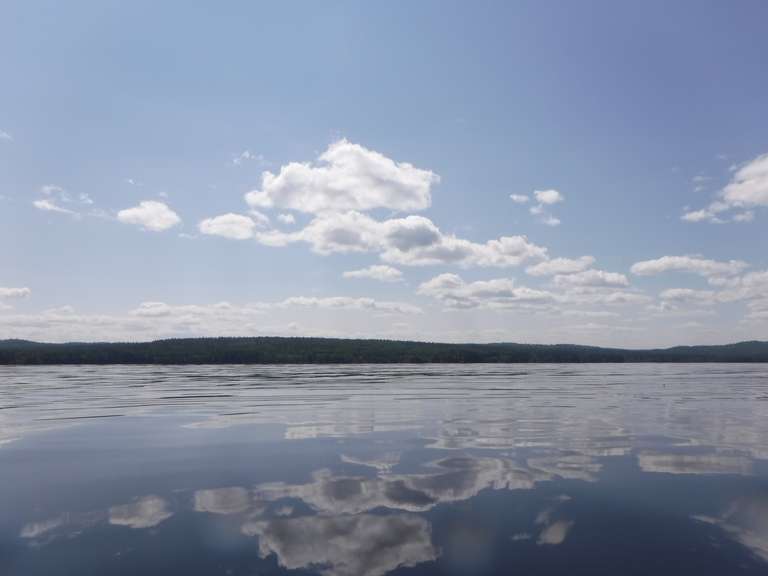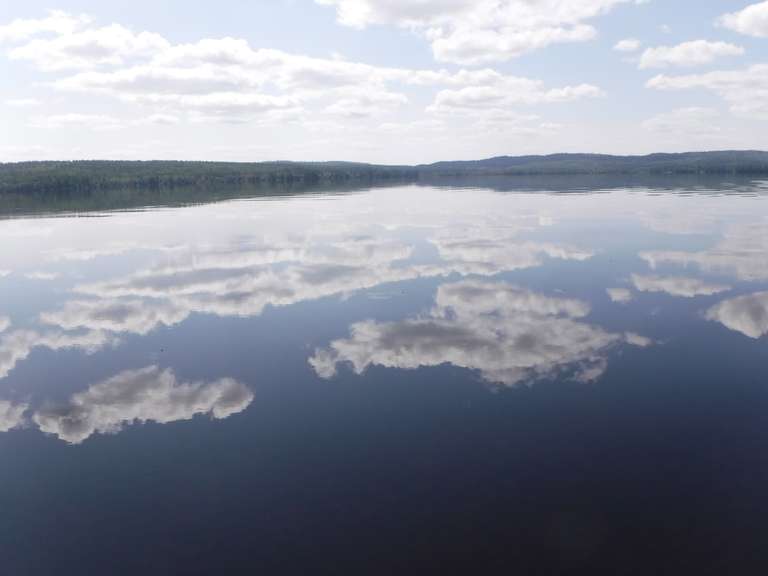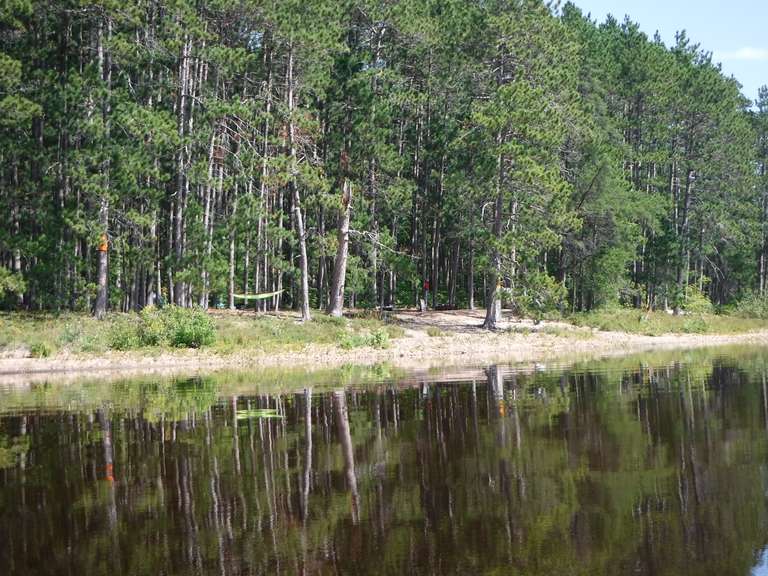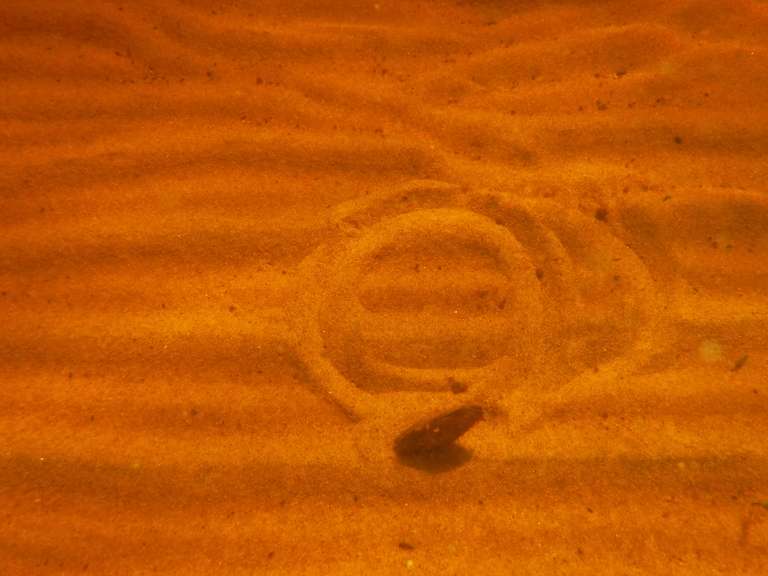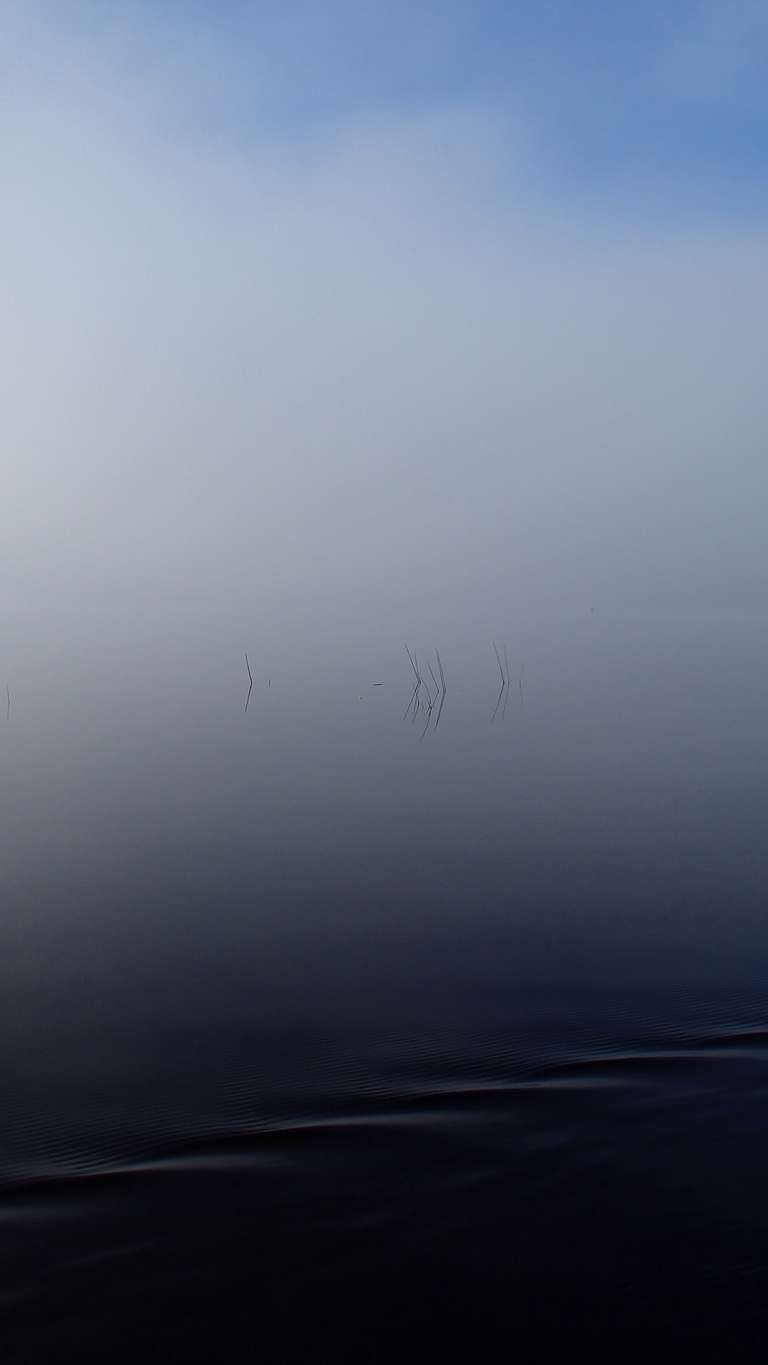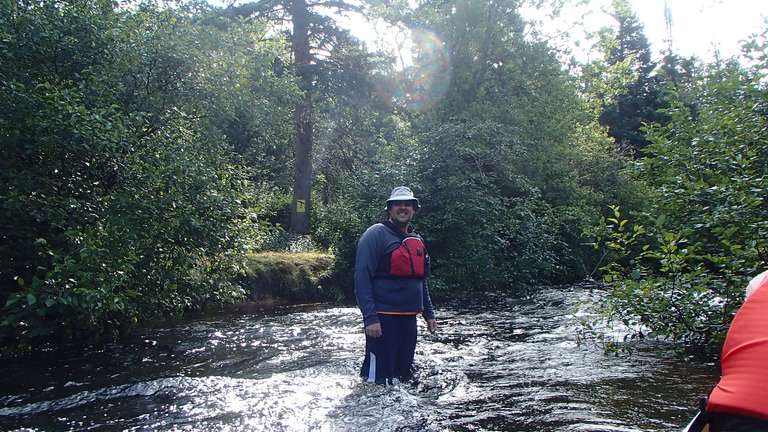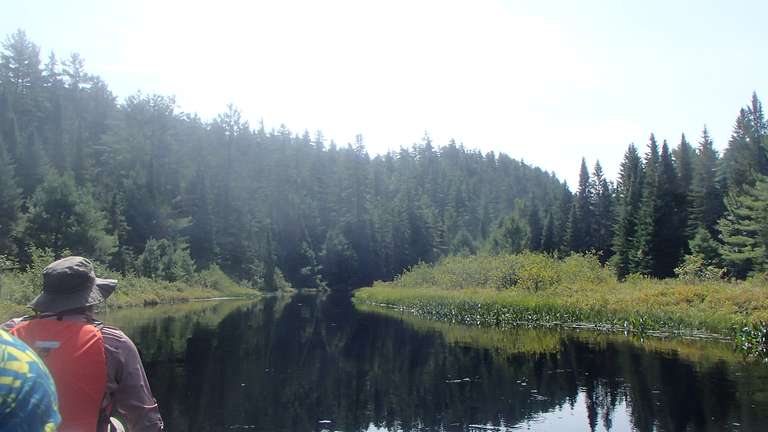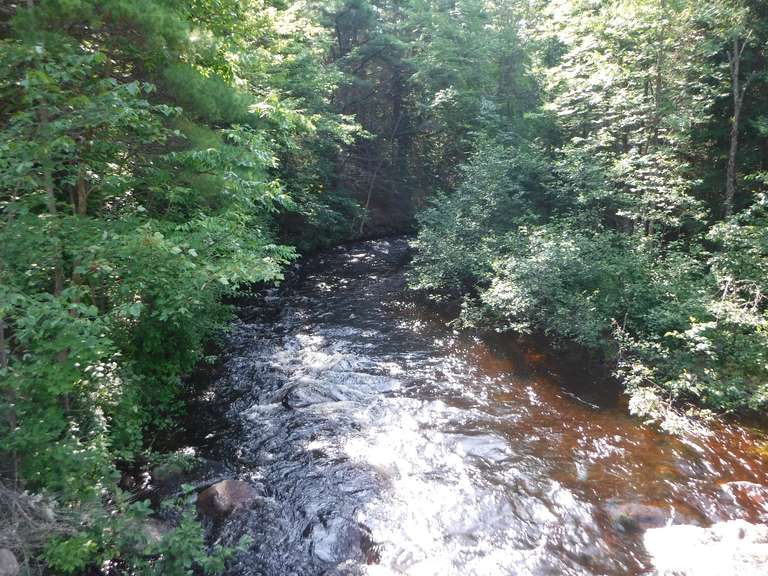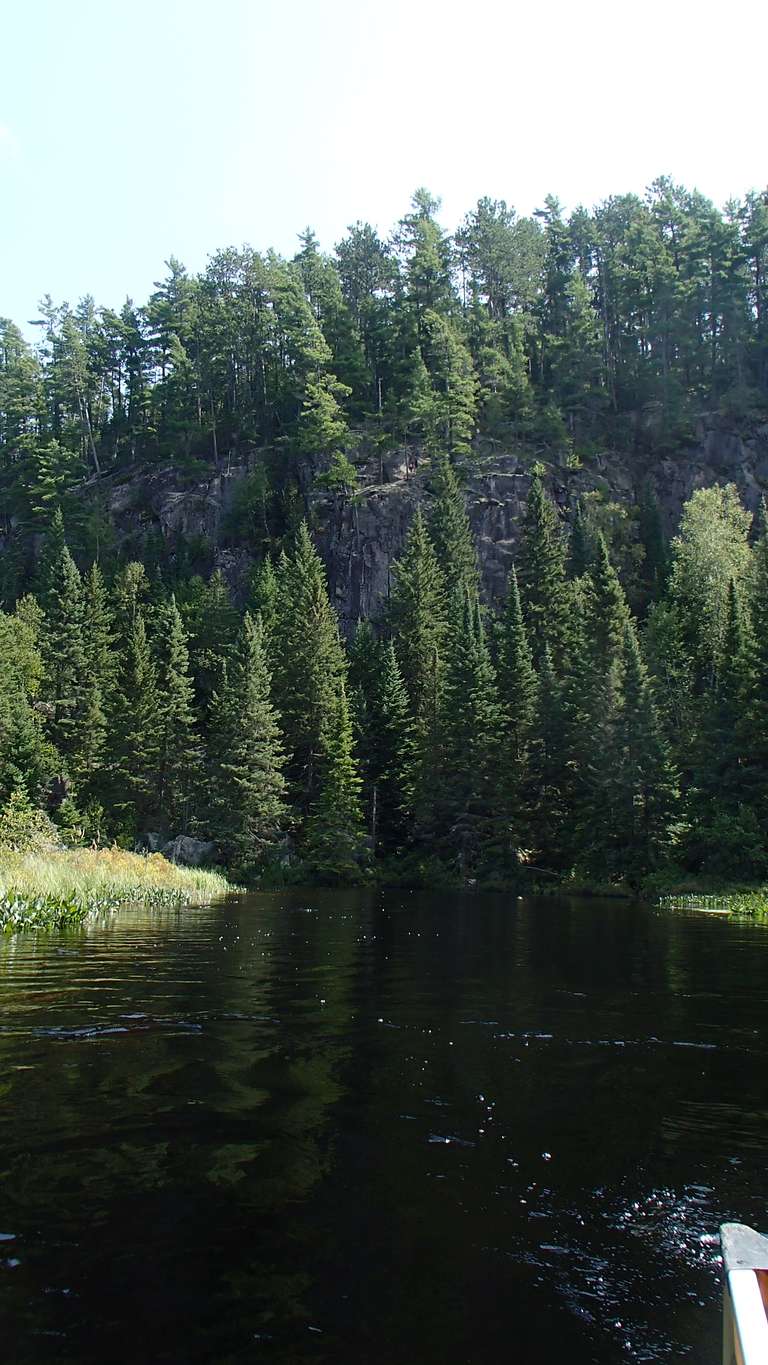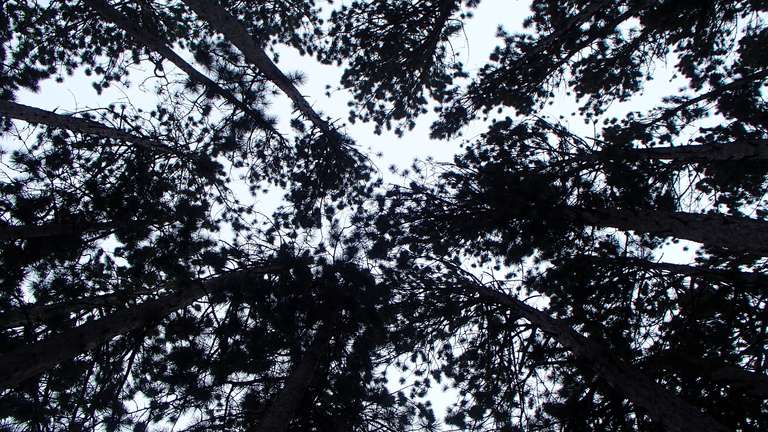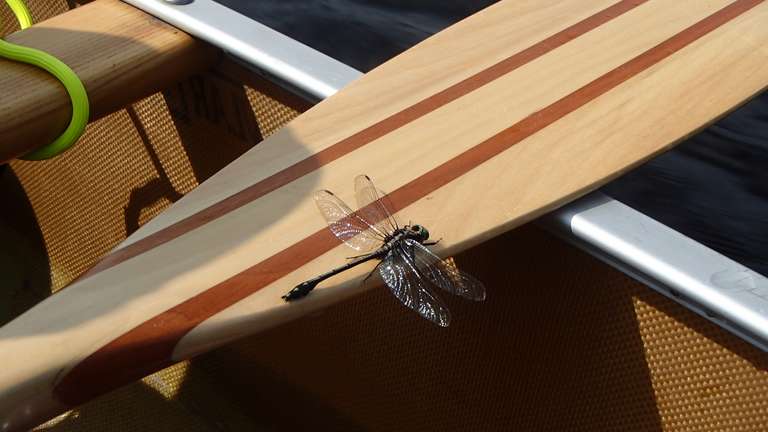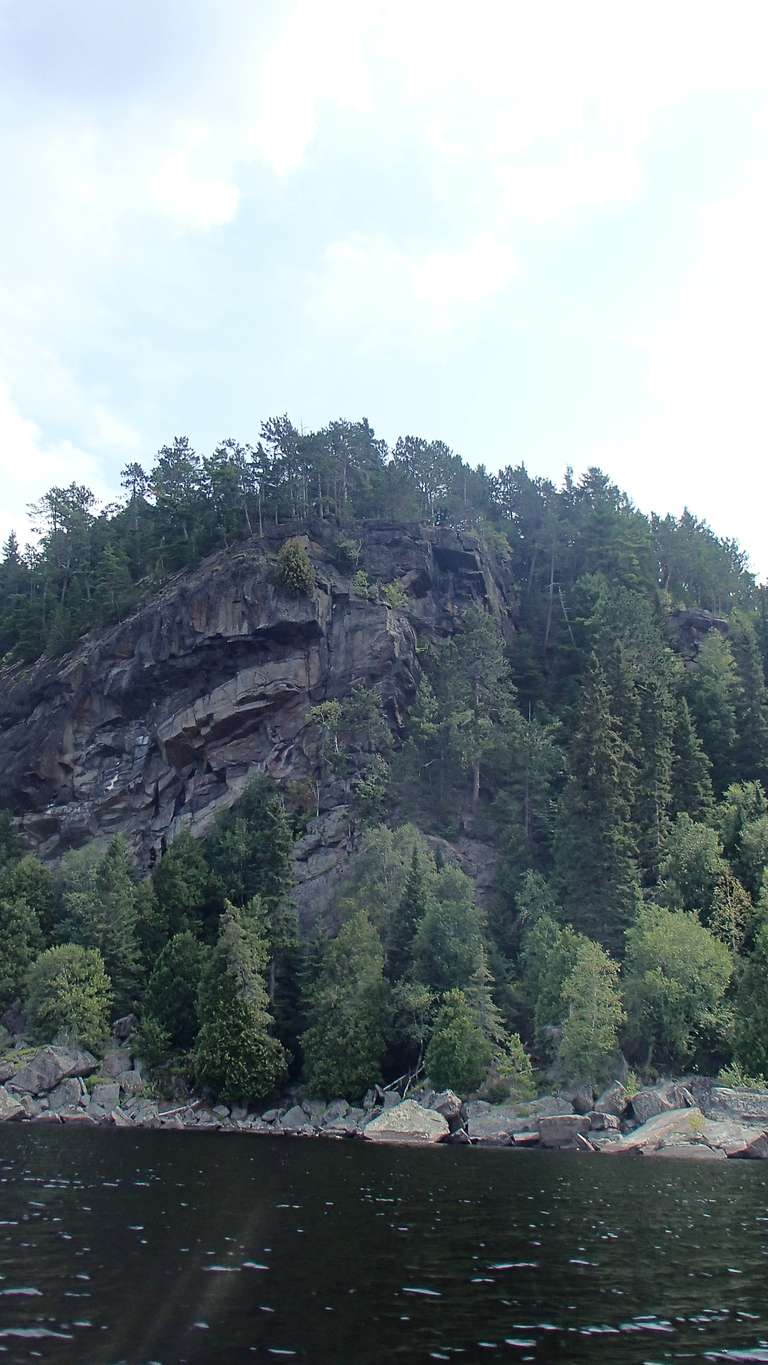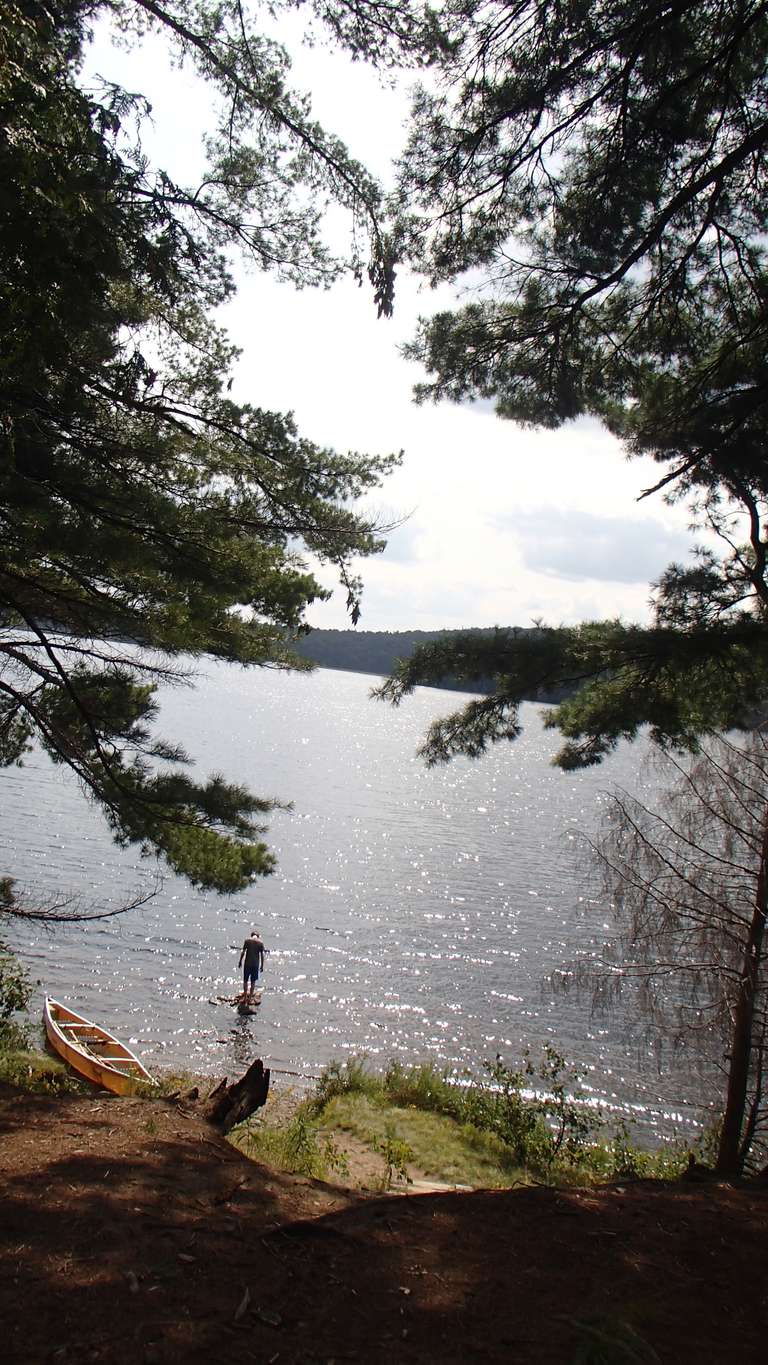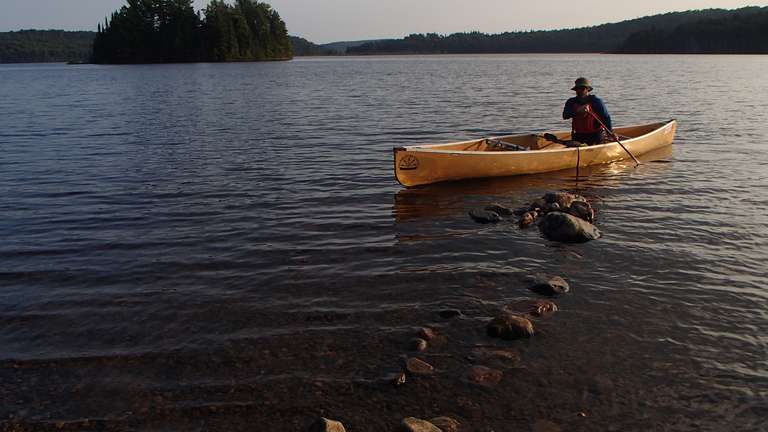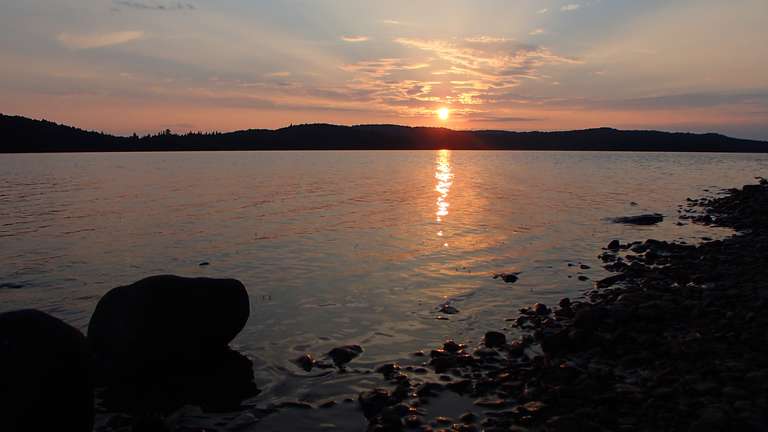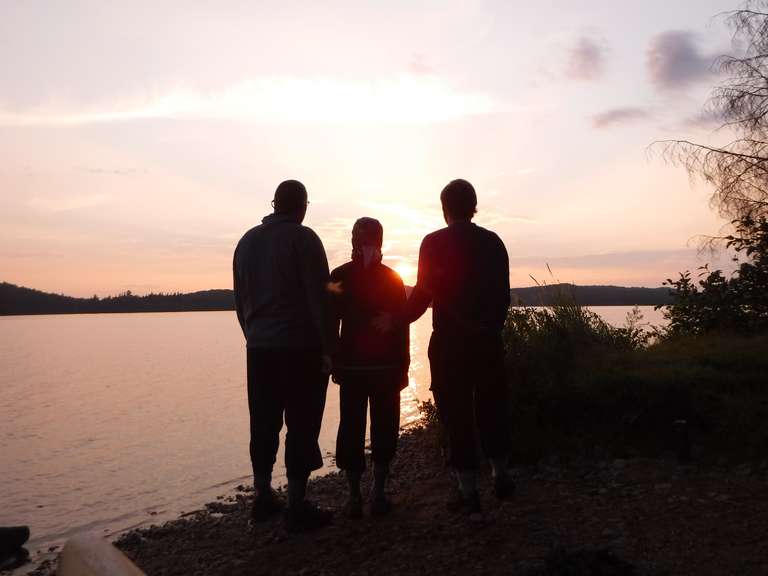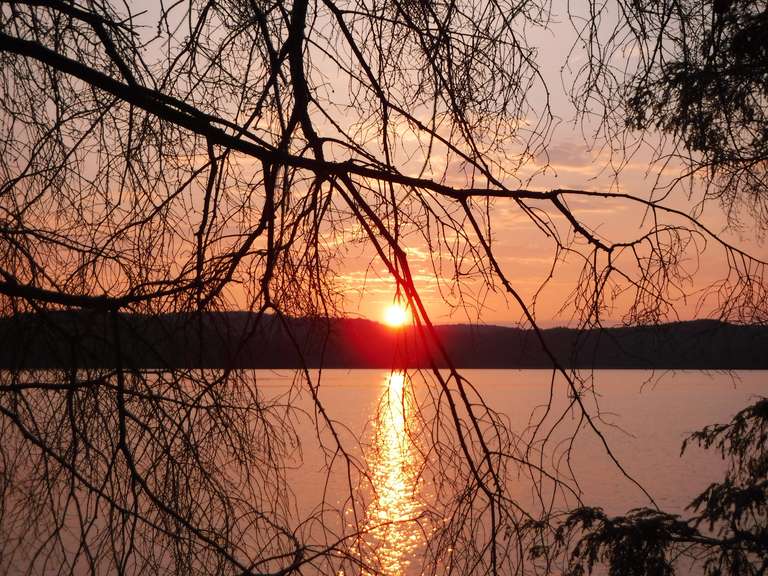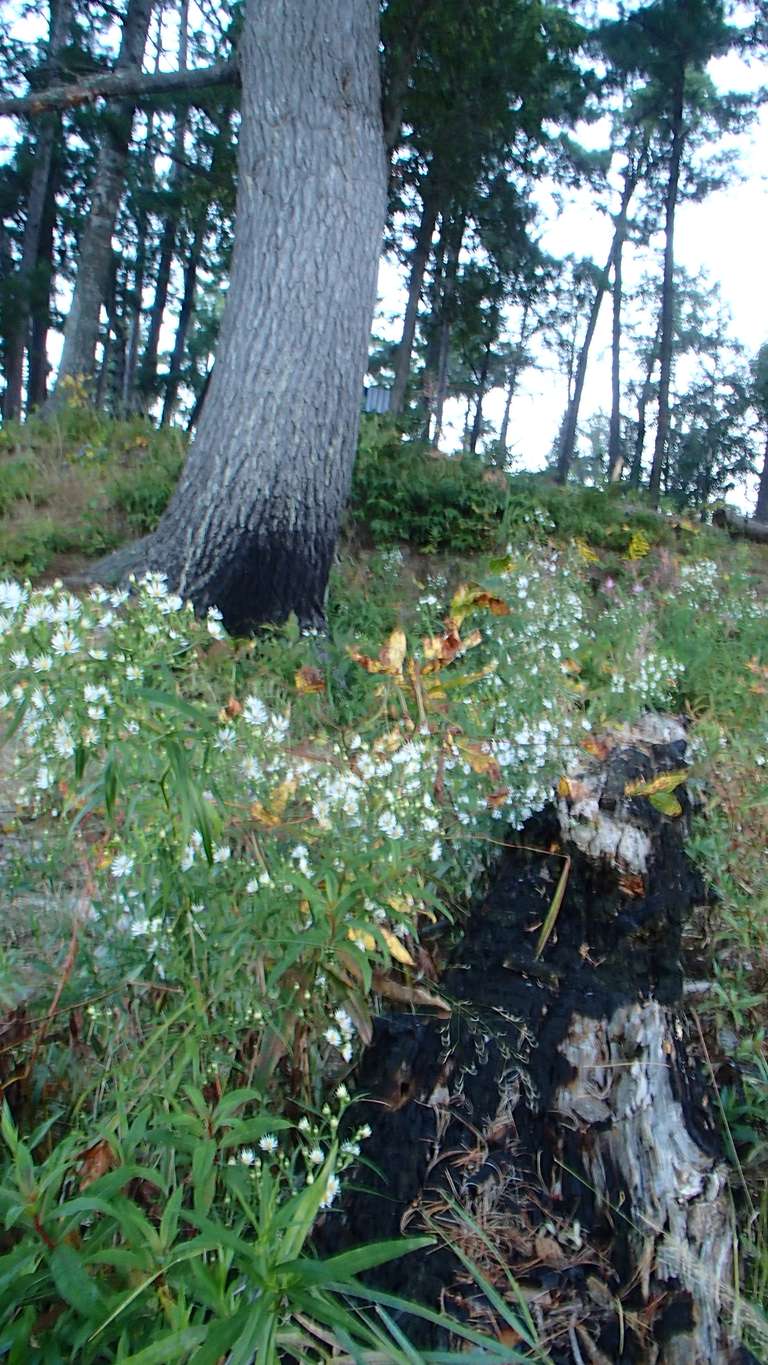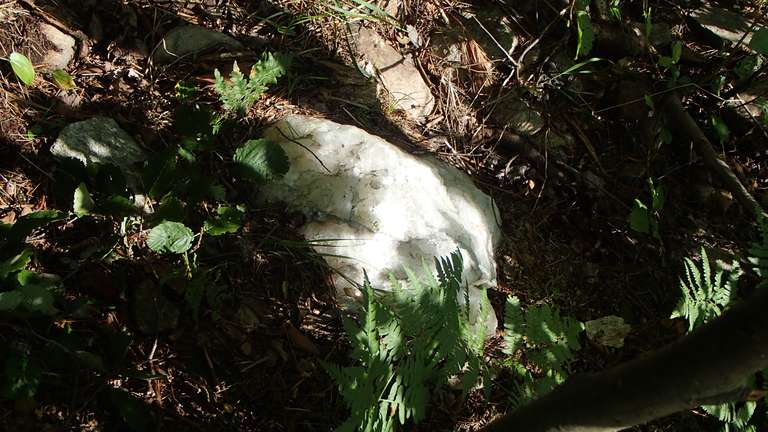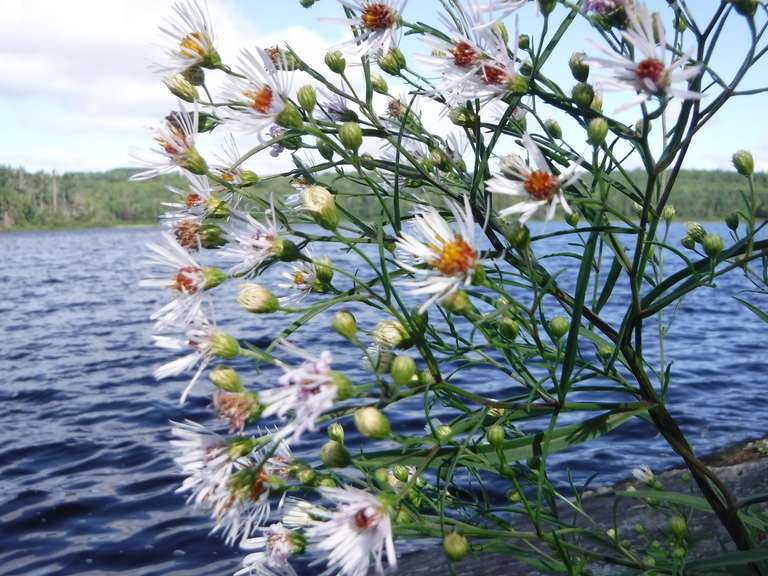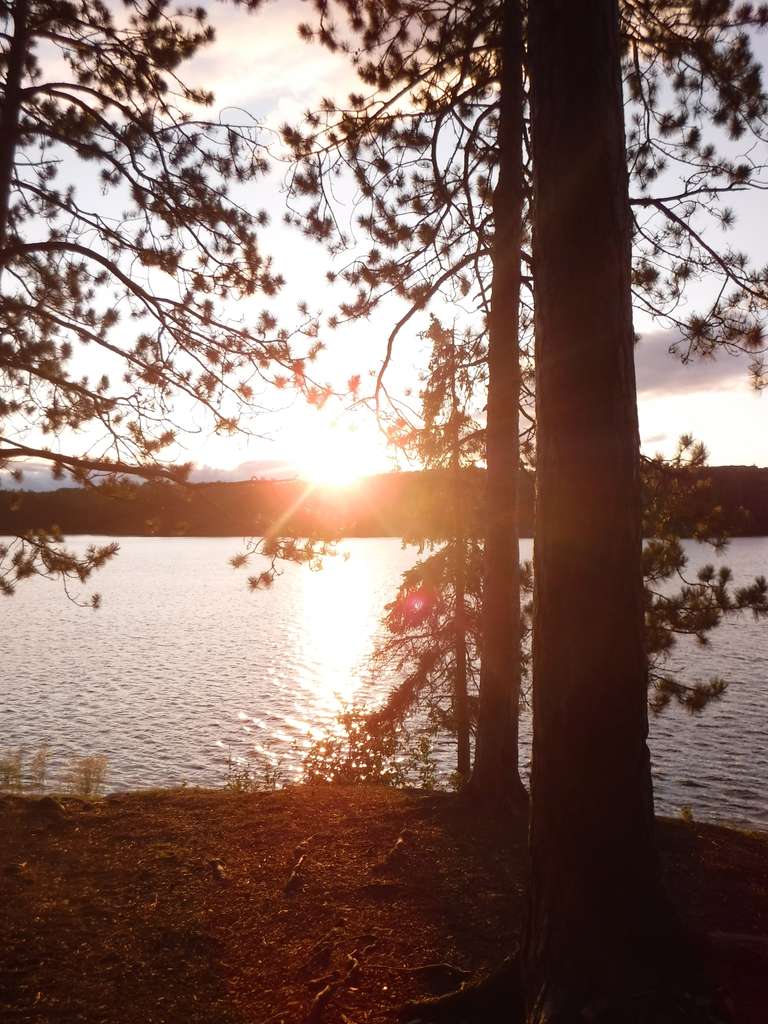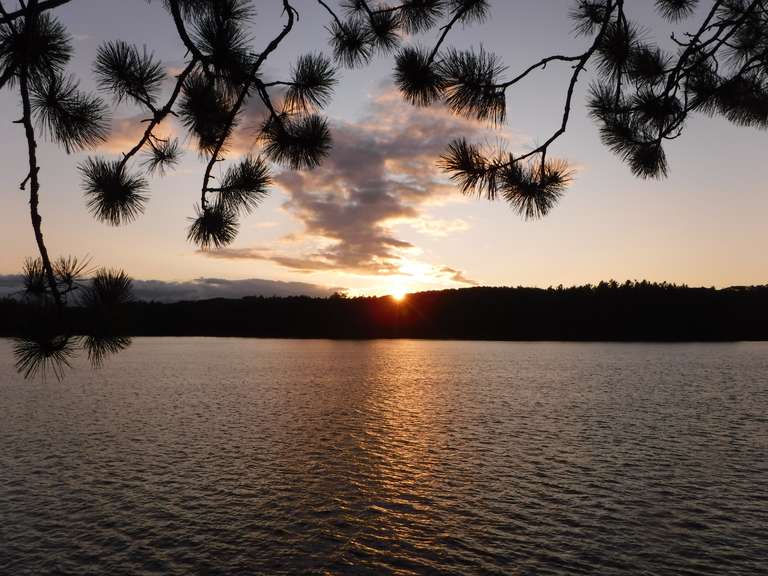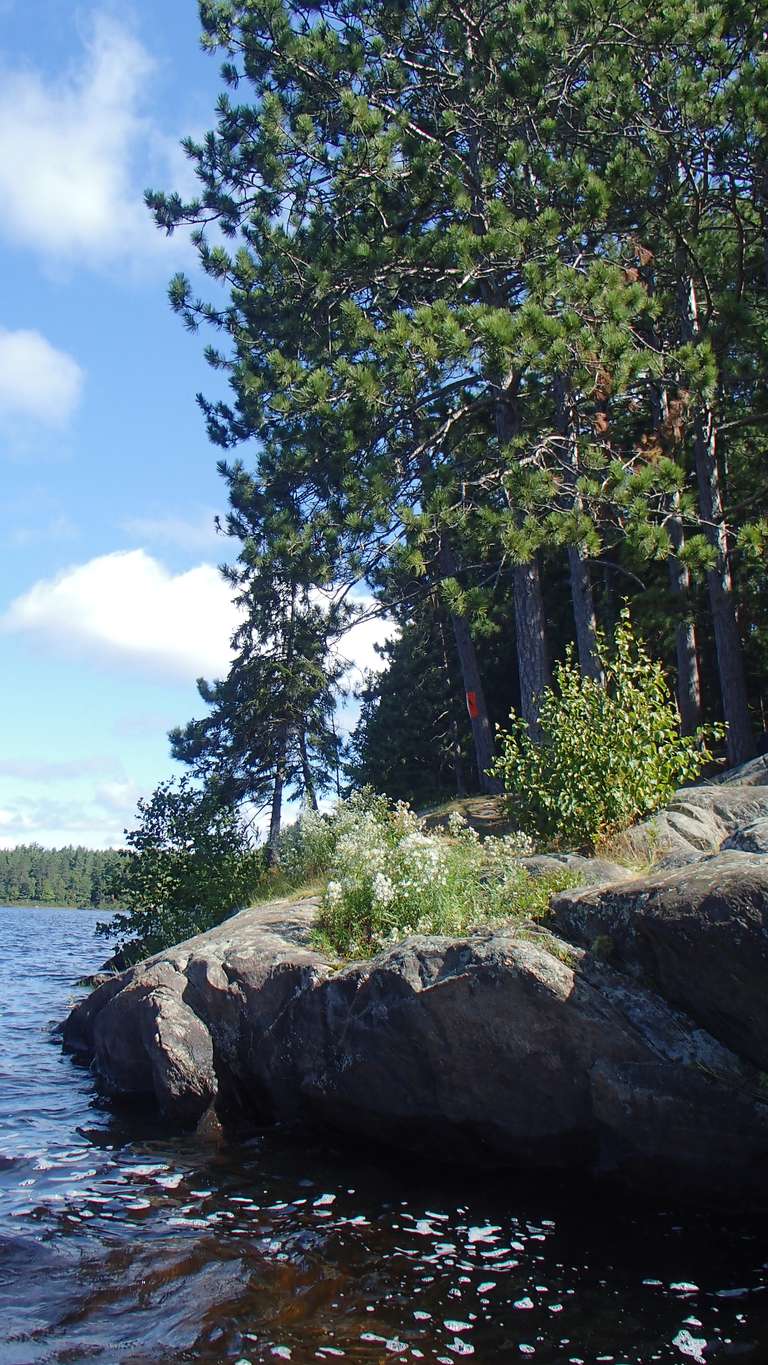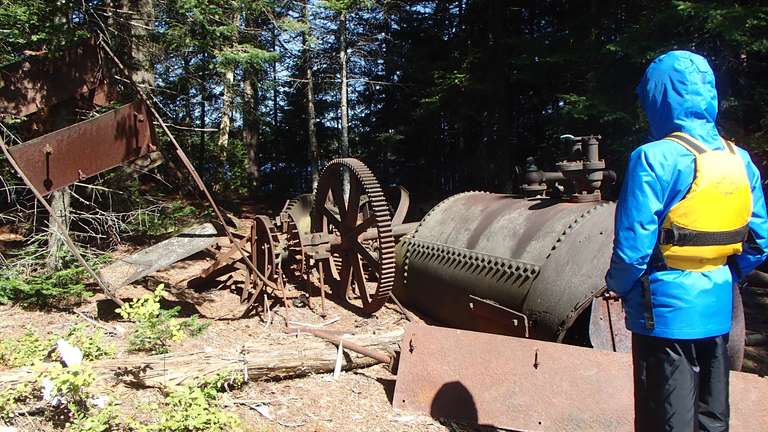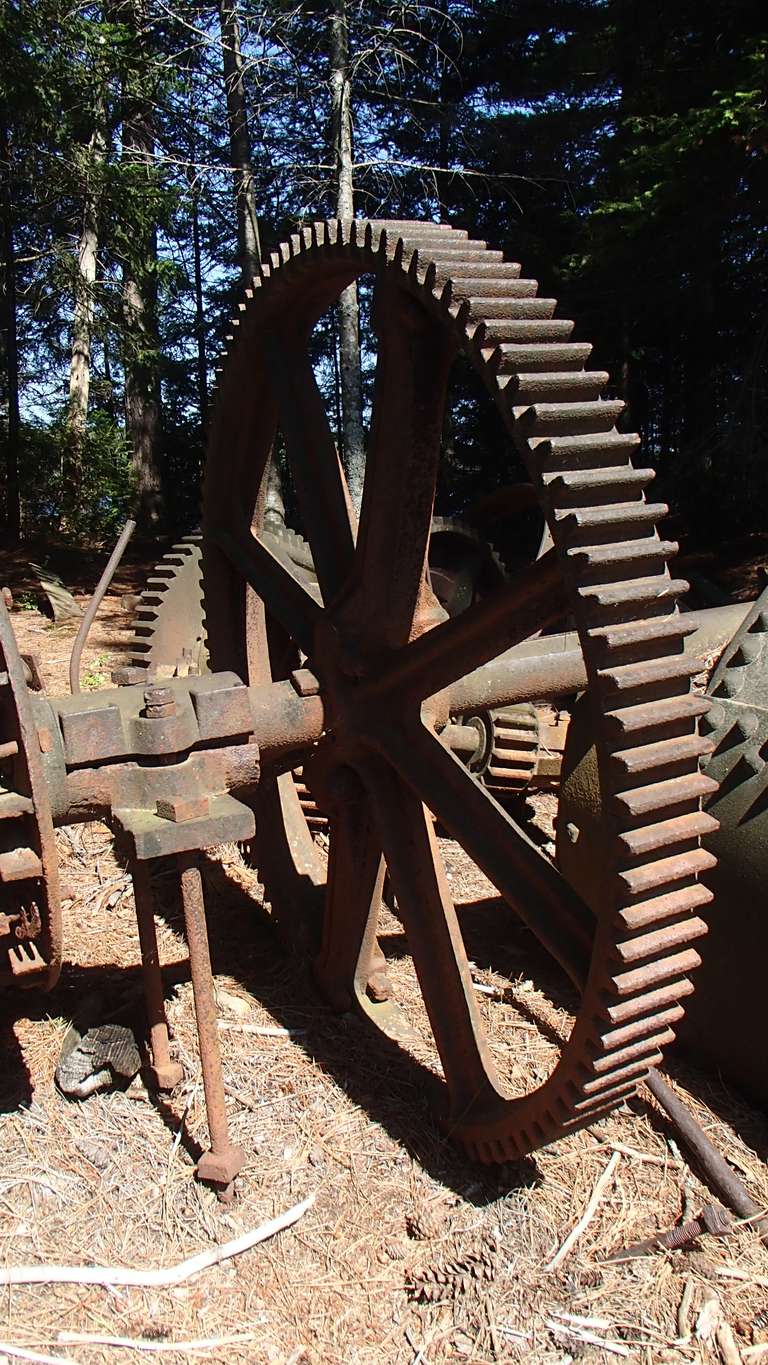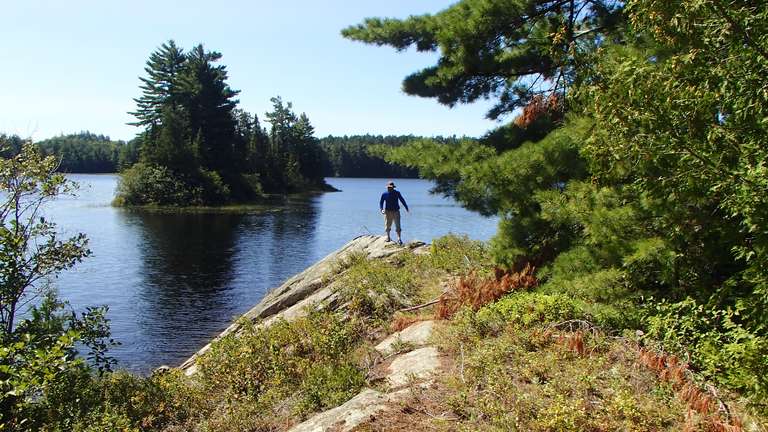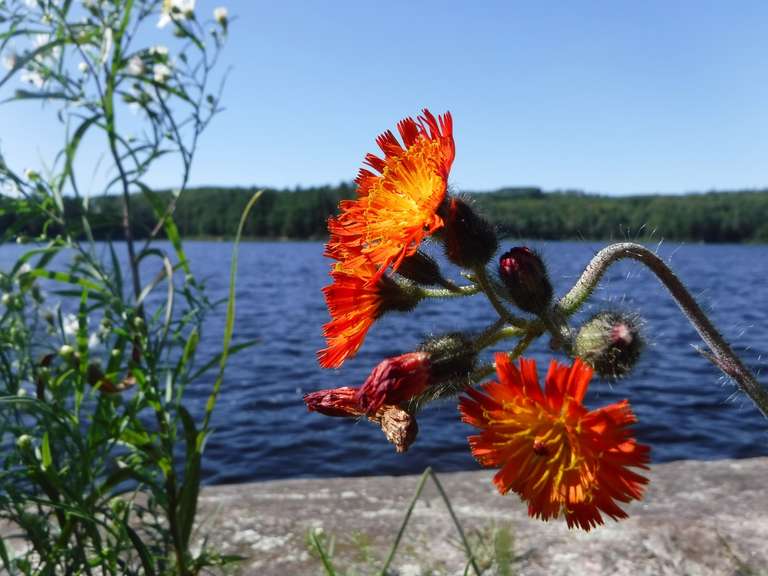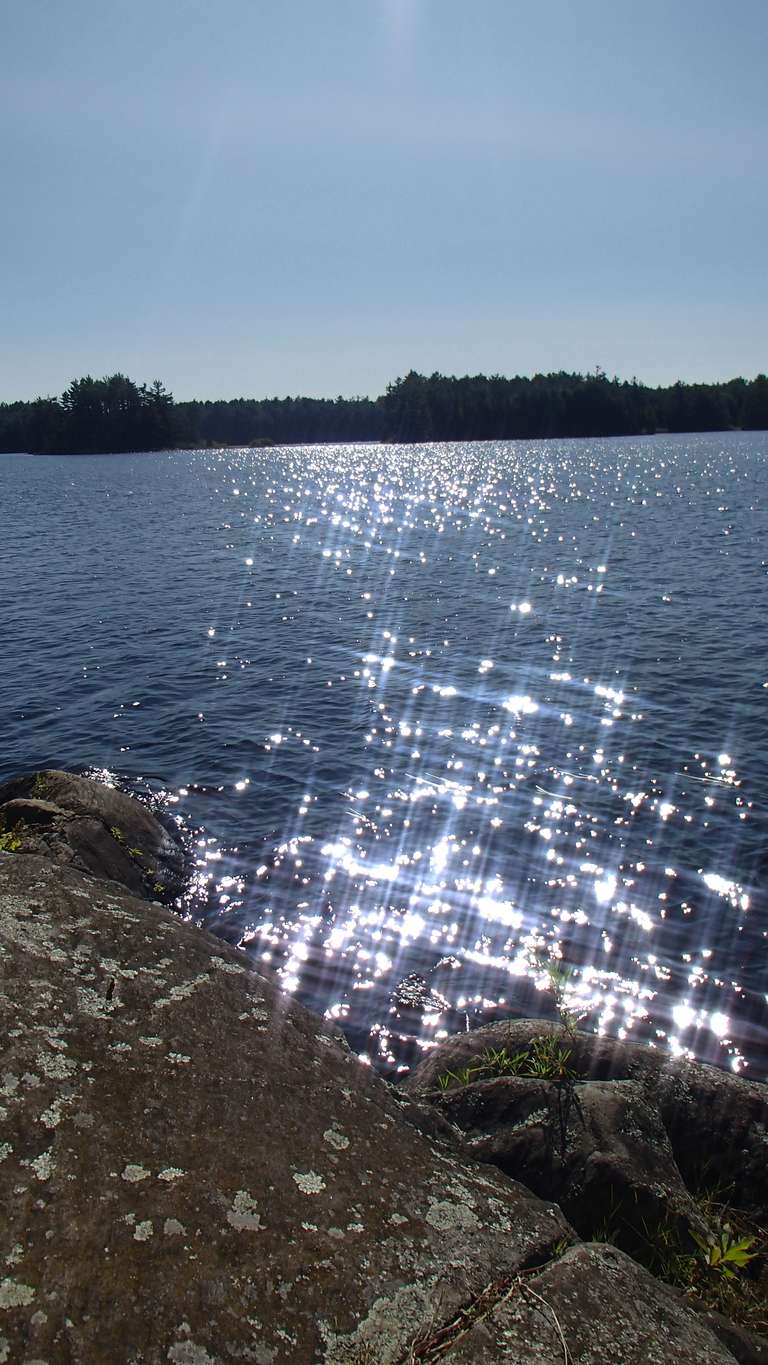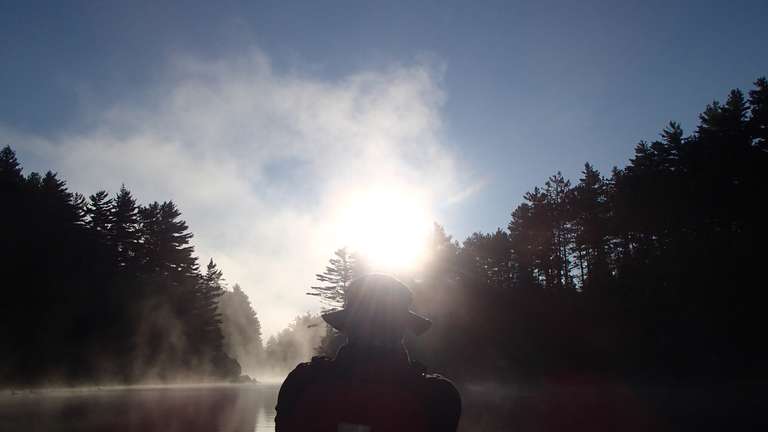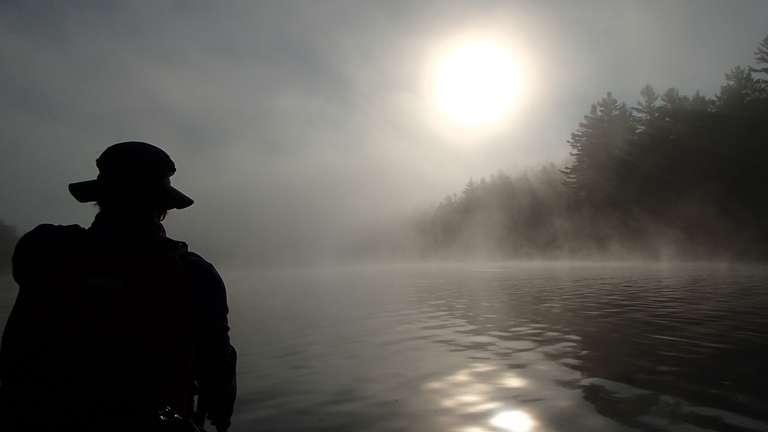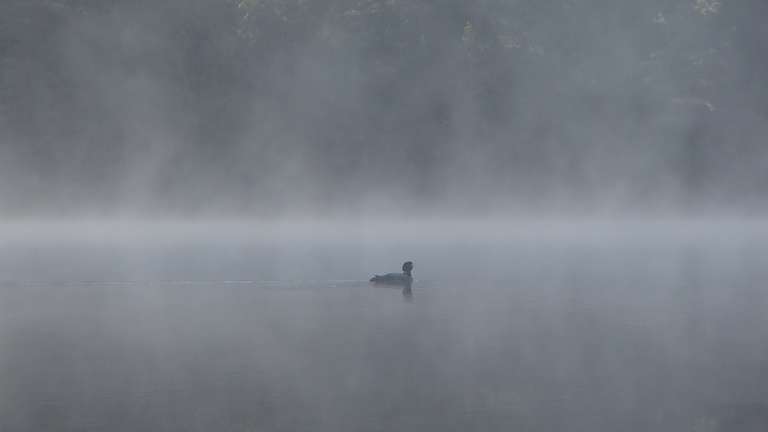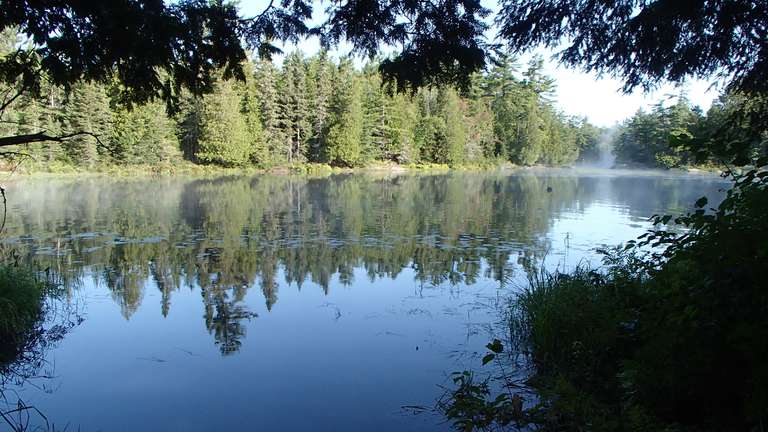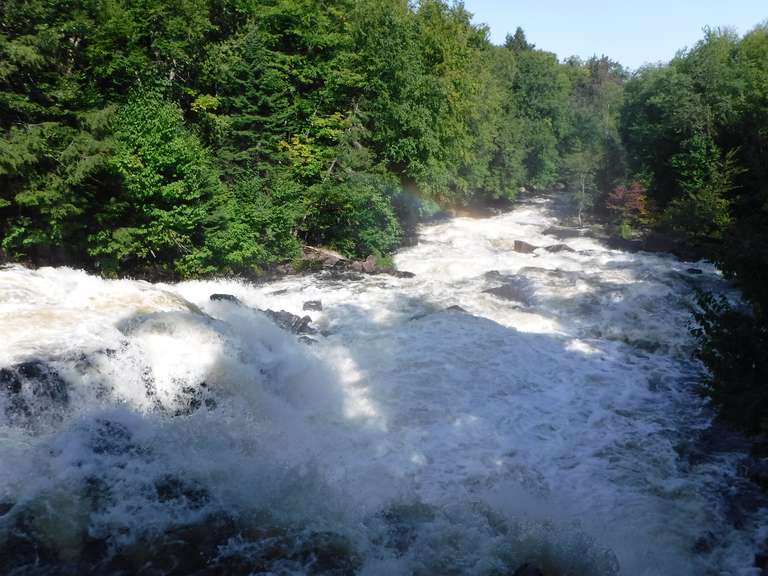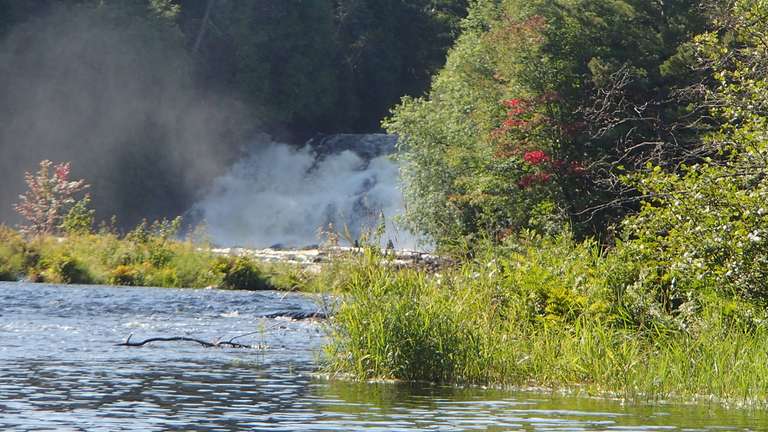2017 - Late Summer
Late Summer 2017 Trip
What started as a trip or two is slowly becoming a tradition. This trip-log describes the third annual late summer trip for my brother, son, and I. I had fond memories of Radiant lake, formed by a father son trip I had taken years ago. I must have talked about it enough over the years to make James request a visit during our 2017 trip. Joshua and I wanted to see more of the northern side of the park, having read a great deal of trip logs offered up through the Algonquin Adventures site that were focused on the area.
Our trip would have us try a clockwise loop out of and returning to Cedar via Radiant, Hogan, La Muir, Burntroot, and Catfish. We noticed trip journals covering similar routes typically traveled counter-clockwise. This seemed wise given the direction winds might usually blow across some rather large lakes. When booking it appeared as though a few people might have been working through the counter-clockwise loop as there were reservations on what would be our expected stops, but little to no activity on the expected stops when reversing the route. We decided to risk fighting the wind in order to seek a little more solitude.
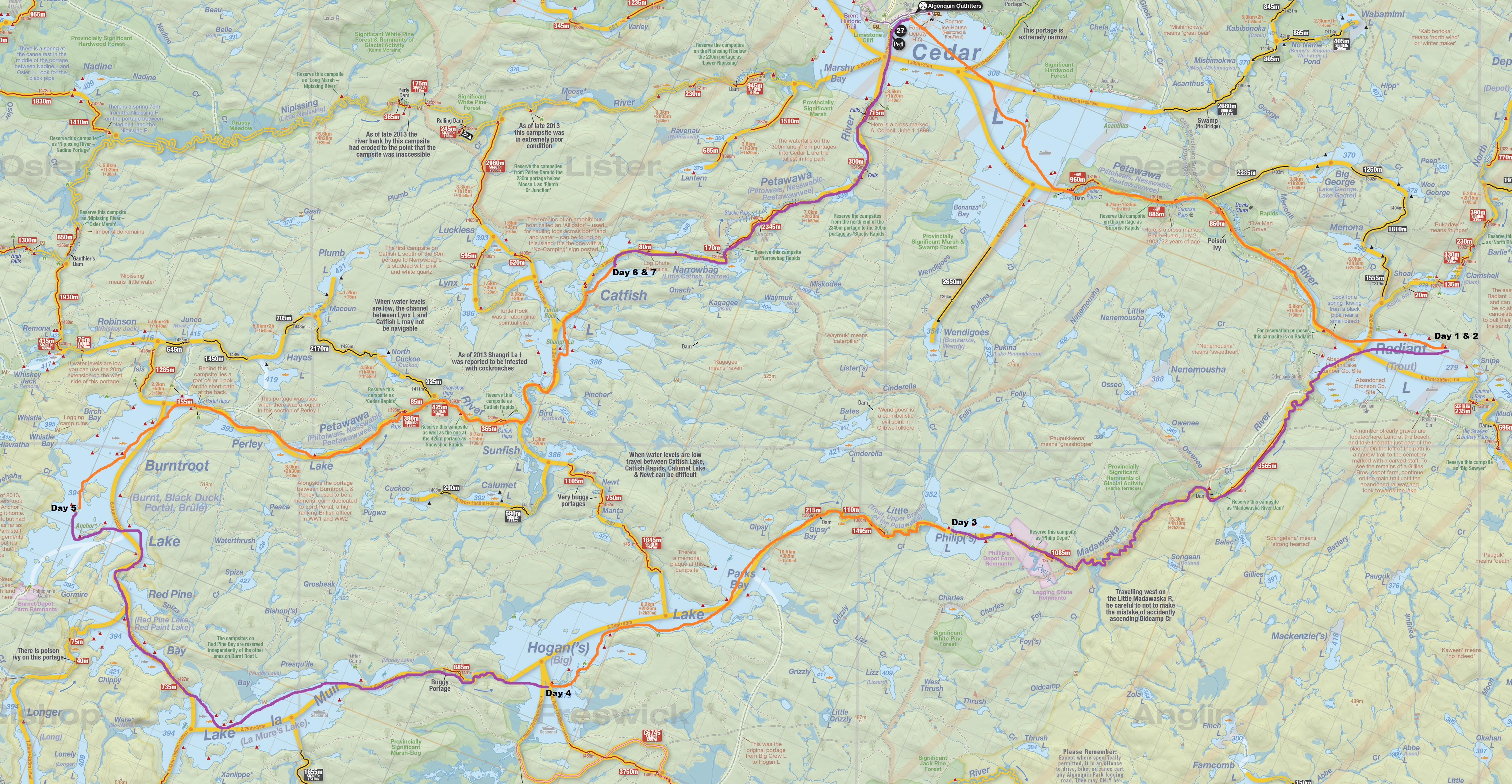
Day 1: Making our way to Radiant
Once again we used our access to a cabin near access point three and drove "half way" the night before. We woke early, had a quick breakfast and stopped in at Algonquin Basecamp to pick up another rented Souris River Quetico 18.5. It had worked so well the year before we couldn't imagine trying anything else. A resident Algonquin Adventurer gave us a few tie-down hints, and gave a final inspection before we left to complete the rest of the drive.
We arrived at Cedar lake around 1:30, I suppose we didn't get up early enough! It was around 2:00 by the time the canoe was loaded up and ready to go. There was a little bit of excitement around parking that needed to be settled; it was a fairly busy Saturday afternoon. Cedar Lake would be kind to us this day, it was almost completely flat with little to no wind. We made quick work of finding the first portage onto the Petawawa, and tried not to disturb the folks on the campsite sharing the portage landing and were on our way. Just before leaving one of the campers warned us that the portage was a difficult one.
For the first half we wondered what those campers were on about. The trail was wide and smooth and distance fell away easily. Somewhere along the way I began to find footing more difficult and progress slowed a little, but we found the end eventually. We found the put-in steep and awkward. When we stood still for a couple of minutes contemplating how to maneuver the canoe, we also noticed that mosquitoes were still quite active for this time of year.
Our 2015 and 2016 trip were both on the west side of Algonquin, where the Petewawa is small and meandering. We were amazed to see how large the river becomes on its way through Cedar Lake and beyond. Enjoying the scenery, we soon found ourselves at the 685m portage and crossed paths with a group heading out of the park. We took a break at the campsite near the end of the portage, but not for long as the bugs drove us back onto the water in fairly short order.
We pushed through the 860m portage quickly, eager to reach Radiant to see what sites might be left late on a beautiful Saturday evening. Remembering the beach-front sites from yester-year we hugged the north shore heading east. The first site along the river as it transitions into the lake was taken, but its occupant helpfully hinted that most sites on the lake were still available. The first two we passed were available, but looked overgrown. One of these sites was the one Joshua and I stayed on years ago, but it was very hard to recognize through the over-growth, and the beach we had enjoyed at that time was nowhere to be seen. We pushed on, passing a beautiful looking site occupied by what I would later learn was yet another member of the Algonquin Adventure forums.
Just past that beach site is another, where we made camp for the night. We might have continued to look, but wanted to make sure we were on site before daylight gave way to twilight. The site (PCI #5) was nice and open, had a number of tent pad options, and came complete with a nice large stack of firewood to get us started.
We enjoyed london broils, grilled zucchini, and mashed potatoes cooked over the campfire. By the time everything was ready moonlight provided our dining light, so we were glad to have that firewood to get us started. We hung our food bag, enjoyed a bit of star gazing, and heading off for bed.
Day 2: Resting on Radiant
We woke to another clear and warm day Sunday, and the lake was very quiet. Scanning with our binocculars it appeared as though no one else had showed up. Since this was a destination we wanted to spend some time on, and we knew we would be coming in late, we had scheduled a 'rest' day on Radiant. By mid-morning the few sites that were occupied cleared out. We briefly thought about moving over to the now vacant beach site, but decided against it. We relaxed for the day, paddling along Radiant's shores visiting the different points of interest marked on "Jeff's Map". We noted the huge old trees on the site near "Radiant Station" but neglected to take any photographs.
Many of the features we remember of this lake were no longer recognizable. We now believe this is due to much higher water levels than our previous visit. All those years ago there was much more sand exposed along the northern shore of the lake, and one could walk out in two to three feet of water for a great distance. We also remember the water being much clearer. Perhaps the heavier rains had something to do with this as well. This lake was still shallow, but seemed several feet deeper than we remember, which had changed the shoreline considerably.
We swam and sunned on the beach campsite before returning to our own site to settle in for the evening. We cut up some deadfall collected through our day of lake exploration to make sure we left plenty of firewood for the site's next inhabitants. Dinner was onion dahl with naan which turned out really well. Star gazing was inhibited by a bright moon that rose quite early in the evening, but no one complained.
Day 3: Upriver
We woke to another fine looking day. Winds were calm, and the sun had not yet thinned the heavy mist on the water. We paddled the length of Radiant once again, noting the cottages on the western shore. We also noticed a number of camper trailers near the exit of the Madawaska River. It seems we were leaving just in time as one of the trailer's inhabitants was firing up their motor boat. The Madawaska River immediately taught us another reason why people travel this loop counter-clockwise: the current was much stronger than we had anticipated. We had to push quite hard to make much progress at its entrance, and the current didn't relent very much through the day. 2017 was a rather wet season, and we wondered if the amount of recent rainfall was adding to the swift current in this first section, or if the Madawaska just moves this way all the time.
We broke the 3565m portage into three sections, a strategy we hoped would help us over the longest portage we have yet attempted. There were lots of pleasant places to stop along the way, though the still-active mosquitoes drove us to move on before we lingered too long. We cheered the ending, loaded up, and pushed into a still strong-willed Madawaska. The scenery along the river was beautiful, and the surroundings peaceful. We took our time, trying not to work too hard fighting the current, munching on what has become our typical lunch/snack fare of dried fruits and nuts. The cliffs showed some signs of nesting birds, though we hadn't seen much of note yet. At this point we began discussing the complete lack of wildlife so far. Everything was earily quiet. Over out two nights on Radiant we hadn't heard, much less spotted a single chipmunk...
The portage to Philip was a cinch as it followed the bed of what appeard to be an actively used road, and off we went to seek Philip Lake. We ended up staying on the most westerly site on the lake. Those that have written about Philip Lake seemed to suggest the southern most site as the nicest, but it seemed a bit too closed in for us. In addition, the beach and nearby boulder-in-the-water were covered in what we believed to be cormorant waste. (We think they were cormorants, but we have limited experience identifying birds. They were large, and black. They stood 'upright' on the rock, flew fairly easily, and dove in the water to fish (we assume)). The rock a number were perched on looked like an iceberg it was so white with the stuff, and we weren't too keen to be that close to it.
The western site was nice and open, though sloped quite a bit except for a single sheltered tent pad a bit north of the canoe landing. The hill behind the site had a number of recently blown down trees. It appeared as though some park staff had recently cleaned up trees that had blown down closer to the site as well. We spread out our tarp on the slope of the hill, which we relaxed on while watching the clouds go by during the afternoon. We took a mediocre (or a 'meh') swim, the water depth never really dropped off. Perhaps one of the other sites might be better for swimming. Dinner was a 'carb-fest' with Dehydrated Rotini Maranara and instant mashed potatoes (James' favourite). The rest of the evening was spent relaxing on the tarp talking and contemplating the universe.
Day 4: Headed to Hogan's Lake
We enjoyed a slower morning, though our time leaving the Philip Lake site was not noted. We started travel with some more upstream paddling, though progress felt quicker. Perhaps we were getting better and/or stronger fighting the current, or the speed of the river was slowing. We discovered some thick, deep mud at the start of the 1495m portage on the way to Hogan Lake. I had to pull James out of it, temporarily losing my own shoe. It had to be recovered with an arm shoulder deep into the mud, which was most amusing. We washed off in the river and were back on our way, this carry feeling a bit longer that 1495m... The 110m and 215m felt very short, however, having not seen anything under 1000m for a little while.
Some wind met us on Parks Bay and Hogan Lake, but nothing compared to the current we had been fighting against the past couple of days. We stopped and explored a few of Hogan Lake's sites, following along the south shore. We eventually settled on the western most site on the large island, though it showed signs of heavy use and a forest fire at some point. We had trouble locating a level tent pad, a fair slope down to our feet would have to do. We spent the afternoon with more "tarp time", a couple of nice swims off the rocky beach, and we picked up some deadfall along the shore to process for firewood. We saw a couple of canoes paddle by later in the afternoon, our first sighting of people since Radiant Lake. Dinner was Knorr soup along with couscous mixed with onion, nuts, dried fruits, cheeses, and summer sausage.
Day 5: Seeking Alligators, Found the Wind
We were scheduled to make Burntroot Lake, hoping to see some of the remenants of the logging industry we had read about. The 685m portage into Lake La Muir was buggy, as advertised. The wind had picked up by the time we reached La Muir, but by hugging the north shore we had pleasant paddle. We all agreed it was a lake we should try to return to spend more time on. The 735m portage into Red Pine Bay felt quite steep for around half of its length, but with our packs getting lighter we made quick work of that carry-over.
We paddled on through Red Pine Bay and into Burntroot Lake, stopping at PCI #5 for a quick break, and were treated with some metal remenants of what we assume was the logging industry. We had designs to stay on the much talked about "Anchor Island", stopping there to check things out. With the wind coming in fairly strong from the west we felt the site too exposed for the conditions, and moved on to site #17 that had a beach landing we could see from Anchor Island. We found it suitable for our needs for the next two nights, so we set up camp to be extra comfortable.
We completed another swim to rinse off the day's travels and enjoyed some snacks on the beach. By mid-afternoon a light rain had started, so we set up a lean-to where we sat and enjoyed the scenery, and once again contemplated the universe. Dinner was easy with KD mixed with various bits and pieces and some Jerky. Nearing dusk James pointed to the sky and stated "Boy, that's a dark cloud". We took it as a sign to brush our teeth and ready for bed. Before we could fetch the tooth-brushes, the wind shifted abruptly and came in with a speed I had never experienced before. It blew out our lean-to, which we took down as quickly as we could and used it to "taco" our gear into. Once complete we began to fear for our tent that was blowing in. We set James off to go into the tent to hold it down (and up!). Joshua was struggling to fetch the already set-up bear hang line, which was being whipped up by the wind. Tree branches began crashing down around the site, and pine needles were blowing everywhere, making it hard to see. I began to worry about the canoe, and ran to tie it to a tree in the hopes of keeping it from blowing away, though in hindsight I'm not sure what would become of it if it were picked up by the wind, tied or not. I suppose a broken canoe might be better than no canoe at all..
With everything tied down we joined James in the tent, holding up the sides to the wind, and hoping the pegs kept the fly down. Eventually the wind died down the point where the tent could once again stand on its own, and we fell asleep.
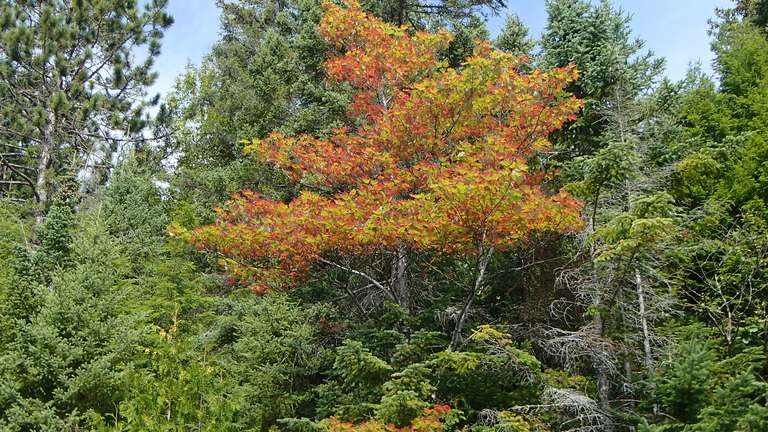
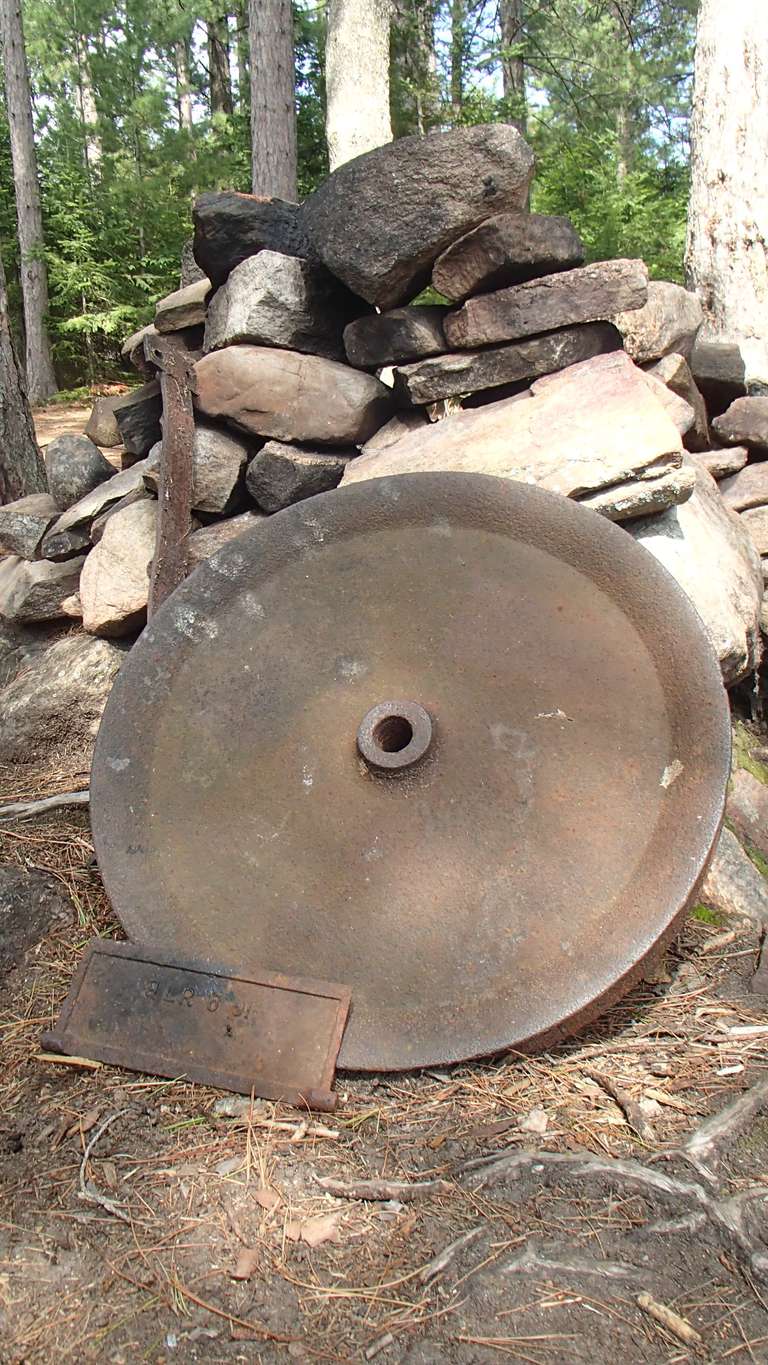
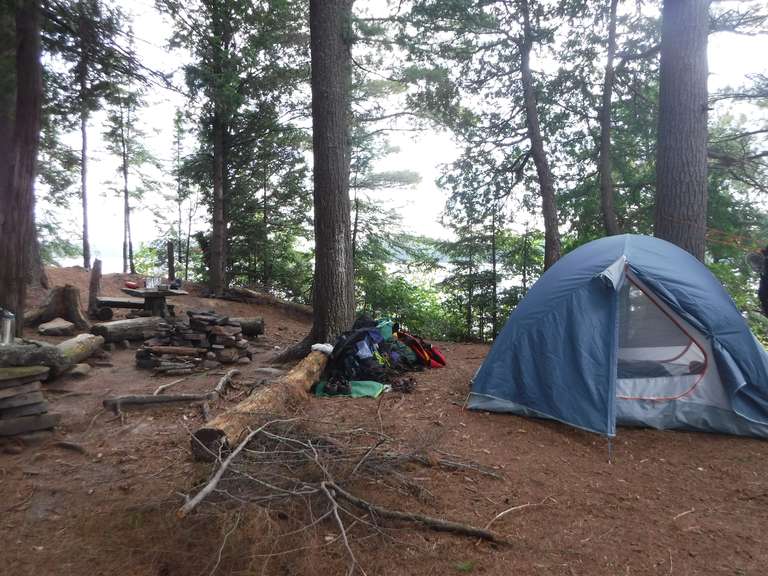
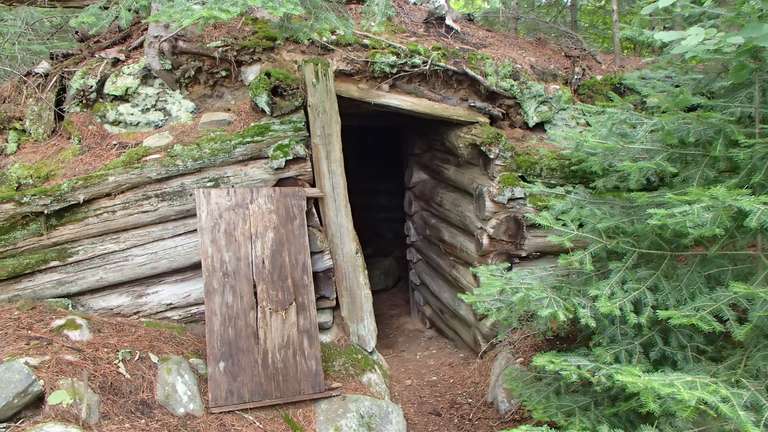
Day 6: Moving Off Schedule
We woke to a strong north wind, and very cold temperatures. We were surprised that with our manhandling of the tent to keep it up, not a drop had leaked in. Score a couple of points for the new tent for that effort. Subtract a few for the structure failing in the wind, though I'm not sure I could afford a tent strong enough to stand up to the previous night's conditions. We failed at making another lean-to to protect us from the wind, and tried to warm ourselves with some hot chocolate and a breakfast of powedered eggs and cheese on wraps. We soon decided to move on rather than mope around in the cold. If we were going to have to find a more sheltered site, we might as well make a day of it. I had noted that there was only one booking on Catfish Lake for the night before we were schedule to arrive. Since there were many sites on the lake we were bound to find something suitable, and perhaps make a more enjoyable day of things as well. We packed up and were ready to go at around 11:30, and pushed off to heavy winds and white-capped waves from the north. We would have to fight to head out of Burntroot. The Souris River handled very well in the conditions, which enamoured us to it even more. We powered our way up to the north shore and followed it in to our portage to Perley Lake.
Before heading down the portage we checked out the "root cellar", which we thought was definitely worth the stop. We relished the time on Perley lake, hugging the shelter of the north shore which reassured us that we had made the right decision to move on. We stopped at the first site on a point for a short break and a snack before arriving at the Petawawa. Cedar, Snowshoe, and Catfish rapids were all quite scenic, and we portaged around all of them. Paddling at this point was extra easy now that we were out of the wind and heading downstream.
The wind was still pushing quite briskly from the north when we reached Catfish lake. We stopped on "Shangri-La" island, but decided it too was not suitable for the conditions and moved on. We stopped at a number of sites that we refused for one reason or another until we found ourselves at the second last site on the north east end of the lake, PCI site #2. It too wasn't perfect, a well worn site that was still a bit exposed to the heavy north wind, but we were tired, cold, hungry, and didn't feel like backtracking, so we settled in.
Jeff's Map notes were correct, the site is studded with white and pink quartz, which James enjoyed spotting. We made a late dinner of dehydrated Chicken Teryaki on wraps, cleaned up, hung the food, and went to bed early to seek some warmth. That night turned very cold. We all woke to seek a sweater for sleeping, and thought about spreading the 'emergency blanket', but managed to find enough warmth to fall back asleep. Now that the tent has been replaced, perhaps new sleeping bags are in order...
Day 7: Enjoying our Last Full Day
We woke to a frosty tent, and frost on the ground. We broke out the toques, but realized we didn't bring any gloves, so we had to use our extra socks. As the sun came around things began to warm up a bit. The site was well warn, and picked clean for firewood so we paddled around the bay picking up deadfall, and stopped to check out the aligator on the island south west of our site. It really is something to see, and hard to imagine something so large winched itself into such a location. We were happy we were able to see it after missing out on visiting the one on Burntroot Lake.
We returned to the site and processed the deadfall into firewood which produced enough for us, and hopefully the site's next occupants. The sun had warmed things sufficiently that we dared a quick swim to freshen up (brrr!), and relaxed out on the rocky point which had warmed in the sun. A couple of canoes paddled by, the first we had seen since the evening on Hogan's Lake. We organized our gear and packed up to prepare for an extra early morning the next morning, our day out. Dinner was dried beans on instant mashed potatoes, and a celebratory freeze-dried dessert (which I forgot to note what it was) that turned out to be decent. The sky was clear and the moon very bright that night as we warmed ourselves by the campfire.
Day 8: Heading Out
Another cold night had us eager to reach our warm beds at the cabin this evening. We were off by 6:30 and made very quick work of the 80m portage onto Narrowbag Lake. A "high water levels" sign instructed us to combine the 170m portage with the 2345m portage by way of a logging road and bridge. We crossed paths with a couple that looked to be triple carrying this one, which must have taken them some time. We tried to take a break on "Unicorn Hill", but the mosquitoes found us so we did not linger long. The wind the past few days had kept the mosquitoes at bay, but the calm morning allowed them to emerge once again. We did stop to take in the falls along both the 300m and 715m portages, which were both quite powerful looking and sounding. With all the wind the past couple of days we were worried what Cedar Lake might be like, but it once again greeted us with calm waters.
We headed across the lake, packed up the car, and went to check out the Brent Outfitters. The staff there seemed interested in the stories of our struggles on the Madawaska. They told us the powerful falls along our last two portages were due to very high water levels - higher than their typical spring run-off levels. The store was very busy, apparently highway 17 was closed the night before which delayed the start of some trips. In addition, the storm we experienced on Burntroot had apparently caused some problems for a few travellers, forcing them to head out early. We returned to the car to find a bustling beach with loads of boats launching for the long weekend. One canoe was so loaded there couldn't have been more than two centimeters of freeboard. We watched for a few minutes anticipating an "event", but the paddlers seemed to be making due just fine.
We stopped at the ranger cabin on the way out to buy a couple of new route maps. James requested one be posted on his bedroom wall so that he could plan out next years trip! Once again we had a great time, and experienced lots of new territory. Wednesday's storm scared us a little bit, but we made out OK and made the best of a couple of cold days near the end. We're once again eager for next year's trip.

